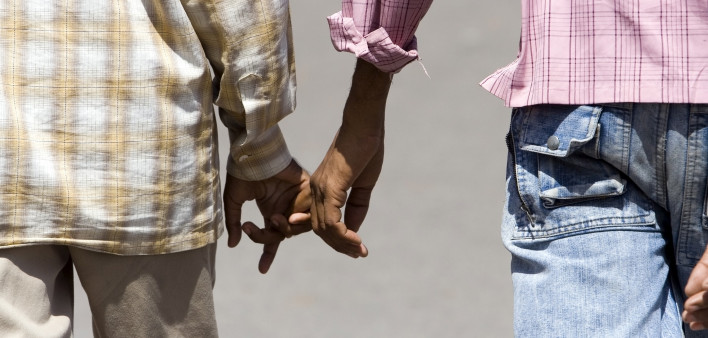Compared with their white counterparts, Black men who have sex with men (MSM) have an HIV prevalence rate 16 times greater than their white counterparts, despite the fact that they get tested for the virus more frequently and are less likely to have condomless sex.
“We have known from prior studies that this paradox exists—Black young MSM engage in fewer risk behaviors but have a much higher rate of HIV diagnosis,” Brian Mustanski, a professor of medical social sciences at Northwestern University Feinberg School of Medicine, said in a press release. The senior author of a new study analyzing why HIV rates are so high among Black MSM, Mustanski continued, “Our study illuminates how HIV disparities emerge from complex social and sexual networks and inequalities in access to medical care for those who are HIV positive.”
Publishing their findings in the Journal of Acquired Immune Deficiency Syndromes, Mustanski and his colleagues analyzed data from RADAR, a project funded by the National Institute on Drug Abuse that provides information on the multiple factors that drive new cases of HIV. The new study looked at data on 1,015 MSM who lived in the Chicago area and were between 16 and 29 years old.
Of all racial groups, African-Americans reported the lowest numbers of sexual partners, got tested for HIV more frequently and were less likely to report condomless sex. Black MSM were otherwise more likely to have a detectable viral load if they were HIV positive and were more likely to report not being close with their sexual partners.
Black MSM were more likely to report problematic marijuana use, while alcohol abuse was more common among white MSM. Compared with white MSM, Blacks reported experiencing worse stigma, victimization, trauma and childhood sexual abuse.
The researchers also identified how the dynamics of chains of sexual partners, known as sexual networks, as well as the high prevalence of the virus among Black MSM, apparently drive new infections in this demographic.
“Their social and sexual networks are more dense and interconnected, which from an infectious disease standpoint makes infections transmitted more efficiently through the group,” Mustanski said. “That, coupled with the higher HIV prevalence in the population, means any sexual act has a higher chance of HIV transmission.”
To read a press release about the study, click here.
To read the study abstract, click here.







3 Comments
3 Comments